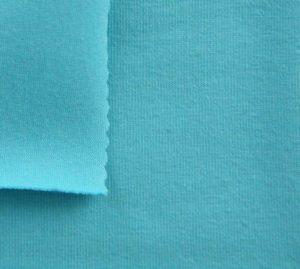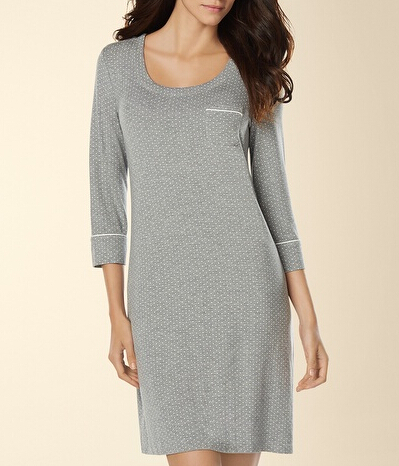It is difficult to imagine modern clothing without synthetics. Natural fibers combined with polyurethane threads create models that have increased wear resistance and an attractive appearance. There are many varieties of synthetic threads. Some of the most popular representatives are lycra and elastane.
Modern synthetic fibers - lycra and elastane
 Both representatives belong to the group of polyurethane threads. Another name for this category is “Spandex”. The word comes from the English word Expand, which means “Stretch”. These also include fibers such as lycra, vairin, vorin, espa, neolan, spanzel. Outside of North America, Spandex is usually called elastane, that is, these abbreviations are synonymous.
Both representatives belong to the group of polyurethane threads. Another name for this category is “Spandex”. The word comes from the English word Expand, which means “Stretch”. These also include fibers such as lycra, vairin, vorin, espa, neolan, spanzel. Outside of North America, Spandex is usually called elastane, that is, these abbreviations are synonymous.
What is elastane
 The product is a knitted thread (“pigtail”), which goes through several stages of production. The threads must first harden, then they are washed and dried. When finished, they are wound onto reels.This is a wet manufacturing method.
The product is a knitted thread (“pigtail”), which goes through several stages of production. The threads must first harden, then they are washed and dried. When finished, they are wound onto reels.This is a wet manufacturing method.
What is lycra
Lycra is a trademark of Invista (USA). It is a type of elastane with strength and elasticity characteristics. Previously, lycra was called any type of spandex, which the brand’s manufacturers did not like. Used for sewing tight-fitting clothes. It is not used in its pure form.
The fiber is a twisted thread that is produced primarily using the dry method. Oil is applied to the threads, then the threads are wound onto spools, which are ultimately heat treated at a temperature of 80 degrees.
The originality of the fibers
Advantages and disadvantages of elastane
 The product combines a lot of positive characteristics that the material conveys in combination with other threads. The best combination is cotton, linen, wool. It has high elasticity and wear resistance. Depending on the type of fiber, it has a density of 1.1 to 1.3 g/cc, which allows you to wear tight-fitting, non-transparent items.
The product combines a lot of positive characteristics that the material conveys in combination with other threads. The best combination is cotton, linen, wool. It has high elasticity and wear resistance. Depending on the type of fiber, it has a density of 1.1 to 1.3 g/cc, which allows you to wear tight-fitting, non-transparent items.
Some types of spandex (except lycra) are not recommended for allergy sufferers. The material stretches and fades when exposed to sunlight and chlorinated water.
Advantages and disadvantages of Lycra
The manufacturer Invista manufactures products in two directions:
- LYCRA HyFit® Fiber, designed for diapers and other personal care products.
- LYCRA® Fiber, a brand that has been around for over 50 years. Fibers allow the body to breathe and feel comfortable, without stretching or deforming. Lycra clothing is durable and practical.
An additional advantage of fiber is its low manufacturing cost, which allows manufacturers to produce high-quality clothing and sell it at an affordable price.
The disadvantages include the same disadvantages attributed to elastane.
What are lycra and elastane used for?
Fibers are added to materials to give them additional properties. Almost all clothing, swimsuits, socks, stockings, tights, and uniforms for sports, tourism and recreation are made from the resulting fabrics.

Discussion Questions: What are the differences between the different fibers?
What is the difference between Lycra and elastane?
Comparing two fibers is incorrect and is equivalent to comparing the term “Car” and the brand of a popular car. Lycra is elastane with certain properties and characteristics.
How does spandex differ from other man-made fibers?
 As mentioned above, Spandex is elastane, that is, the entire group of polyurethane synthetic threads. They contain polyurethane rubber. Artificial threads contain viscose, obtained from cellulose and chemical impurities. Such threads are easier and more cost-effective to produce than spandex. However, they can shrink significantly after washing.
As mentioned above, Spandex is elastane, that is, the entire group of polyurethane synthetic threads. They contain polyurethane rubber. Artificial threads contain viscose, obtained from cellulose and chemical impurities. Such threads are easier and more cost-effective to produce than spandex. However, they can shrink significantly after washing.
Which is better, lycra or elastane
Lycra is a registered trademark. The manufacturer confirms the quality and is responsible for the manufactured products. If a product contains Elastane, the buyer should think about what kind of synthetic fiber it contains. There may not be lycra, but completely different impurities that can affect the quality of the clothing in a completely unfavorable way.


 0
0




